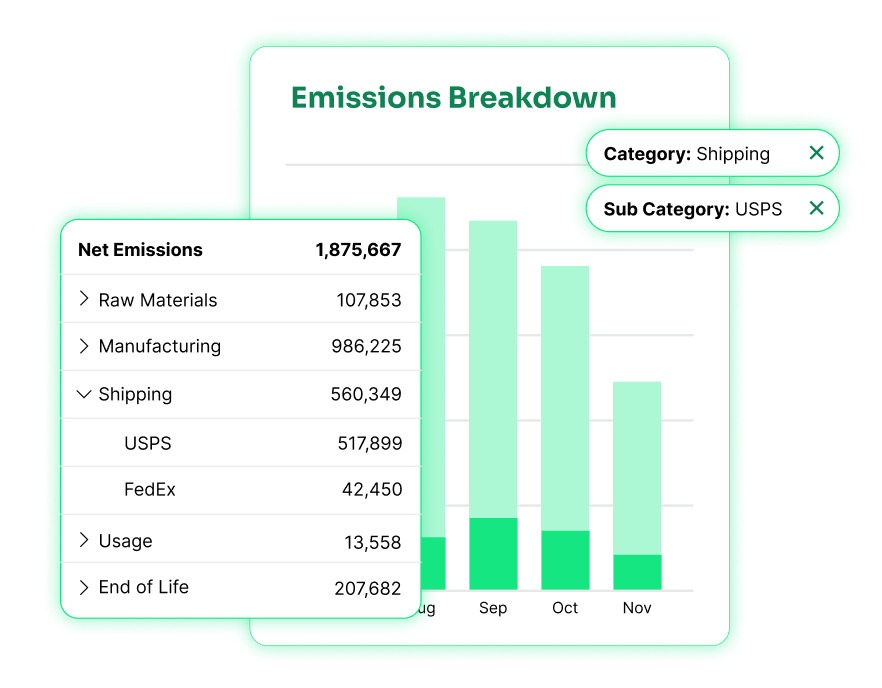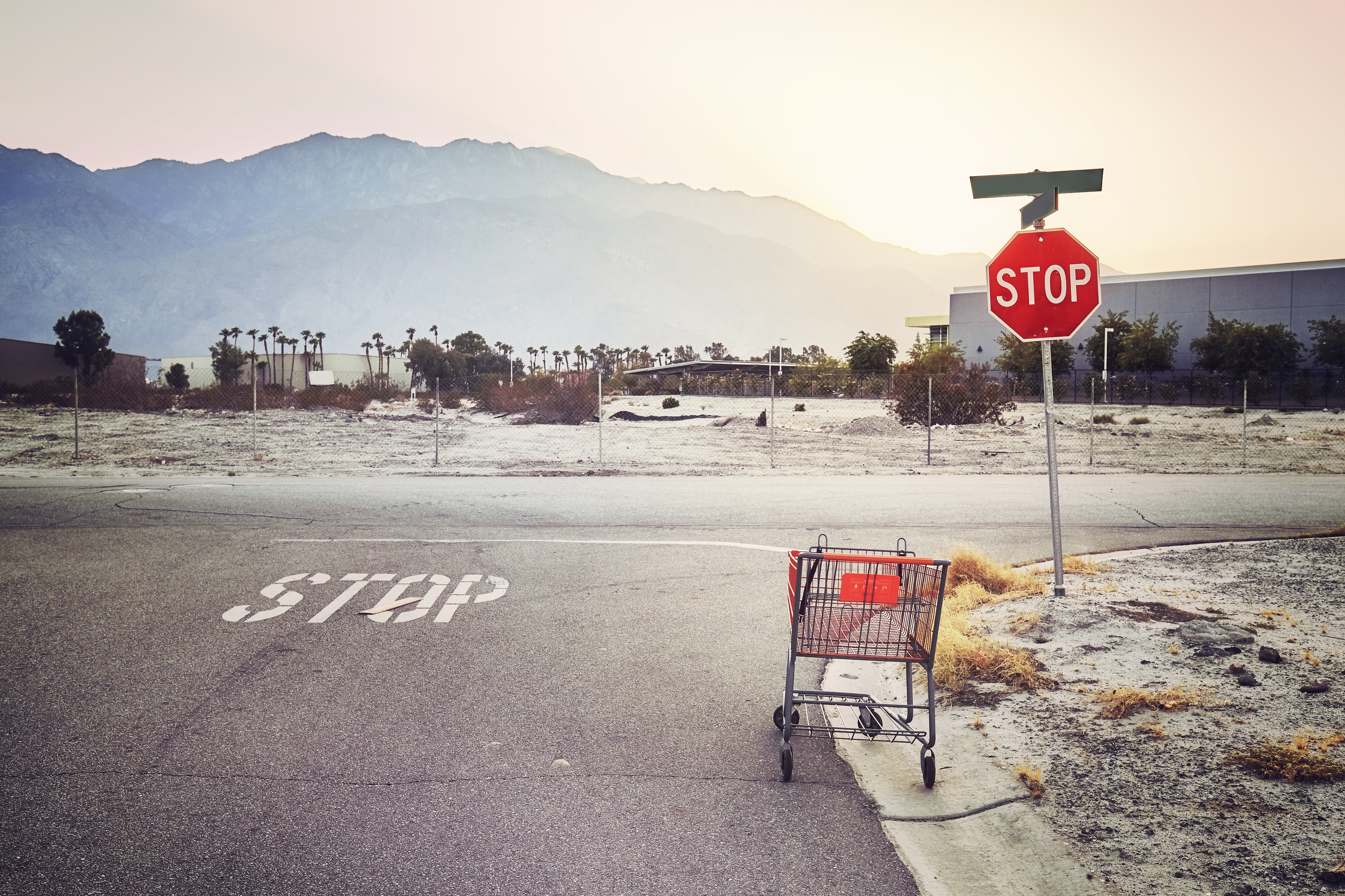Lifecycle marketing is an effective way to maintain a relationship with customers over time, but adding sustainability into the mix can take your marketing strategy to another level. By incorporating sustainability practices into and around your marketing campaigns, you can create an even more meaningful connection with customers while also doing good for the planet.
This article will highlight three effective ways to fuse sustainability with your lifecycle marketing. But first, let’s look at just what lifecycle marketing is and the benefits it can bring.
What Is Lifecycle Marketing?
Lifecycle marketing is a powerful strategy that focuses on building long-lasting relationships with customers. It’s a holistic approach that considers every stage of a customer’s journey, from the moment they discover your brand to the point where they become loyal advocates.
By connecting with your audience at every step of the way, you can create tailored experiences that resonate with their needs and preferences, ultimately leading to higher customer engagement and retention rates.
For example, by identifying a customer’s stage in their journey, you can offer them tailored content that addresses their needs and concerns. This can result in improved customer retention and word-of-mouth referrals, ultimately attracting new customers.
The six stages of a customer lifecycle are:
- Awareness: a customer becomes aware of a product or service
- Engagement: customers actively seek product information
- Evaluation: a customer decides whether or not to make a purchase
- Purchase: the customer makes a purchase
- Support: assistance is required from the customer
- Loyalty: when a customer becomes a repeat customer
Understanding these stages is crucial for businesses to effectively engage with their customers and provide them with the best possible experience.

The Advantages of Lifecycle Marketing With Sustainability
Lifecycle marketing, combined with sustainability, holds immense promise for businesses that are determined to make a positive impact. By seamlessly integrating sustainable practices throughout the lifecycle of your product or service, your business can not only slash costs but also solidify your brand image and captivate the ever-growing environmentally conscious consumer base.
Furthermore, addressing sustainability concerns across the entire lifecycle will enable your business to pinpoint areas for improvement, optimize efficiency, and ultimately maximize profits while significantly reducing your carbon footprint.
Embracing the fusion of lifecycle marketing and sustainability not only establishes a comprehensive game plan for genuine corporate social responsibility but also provides an unparalleled opportunity for your brand to lead the charge against climate change and secure a commanding position in the marketplace.
Deliberate action paired with lifestyle marketing offers effective solutions to greenwashing – ensuring that your commitment to environmental impact is backed by tangible results.
Read more about sustainable marketing practices.
Examples of Sustainability in Marketing: 3 Pillars of Great Green Marketing
If your brand is already implementing sustainable practices, you can take advantage of lifecycle marketing to make your customers aware of that. The best lifecycle marketing strategy uses a combination of email, SMS, and push notification marketing to drive specific messages to target audiences and increase brands’ customer lifetime value.
The high reach and engagement power of these marketing channels will ensure that your messages reach the right audiences. Here are a few strategies you can implement using the lifecycle marketing framework:
1. Share Relevant Information Using Content Emails and Messages
A great example of sustainable marketing is the use of content emails and messages can help amplify your sales efforts. In fact, educational content makes your customers 131% more likely to buy from your online store. You can provide all the information your customers need to know about the background and process of your products and services. Using sustainability management software, like EcoCart, can help you gather your talking points for customers.

You could produce written content, such as blog posts and newsletters, for customers who prefer to read. Want to really crush your eco-friendly advertising? Make some high-quality video content – it’s an engaging option for those who prefer visual media. And if you can’t decide between written or visual content – infographics are an engaging combination of both!
You can use these mediums to communicate all the information you couldn’t fit into your promotional materials. Don’t forget to mention all of the sustainable practices that went into the making, packaging, and delivery of your products.
2. Convey Your Eco-Friendly Message Using User-Generated Content (UGC)
Highlight product reviews and customer feedback in your marketing campaigns. Seventy-six percent of consumers are more likely to trust their peers over advertisers. So instead of tooting your own horn, why not let your satisfied customers do it for you?
Some examples of UGC you can use are:
- Product reviews
- User feedback
- Product use demo videos
- Customer testimonials
3. Provide Eco-Friendly Options to Your Customers
It all boils down to accessibility. A lot of consumers prefer sustainable delivery practices, but they just don’t know where to start. So why not include some eco-friendly options in your checkout process?
EcoCart fills this need by providing a free ecommerce plug-in that makes customers’ orders carbon neutral. By simply clicking a button at checkout, your customers can support carbon offsetting initiatives that work to reduce carbon from the atmosphere.
You can even boost customer awareness of these options by sending reminder emails, SMS messages, and push notifications. Consider creating content pieces that explain the process clearly to help your customers make more empowered decisions.
Improve CLTV and Brand Reputation
A strong and loyal customer base is a valuable asset for your brand. By making customers feel valued and heard, they are more likely to return to your business, which helps your company thrive.
To make customers feel valued, it’s important to create touchpoints that align with their passions. With the increasing environmental consciousness of today’s consumers, reducing our environmental impact and carbon footprint has become a top priority.
Differentiate yourself from competitors through your sustainability strategy and transparently communicate your journey to your customer base. In addition, by making your customers a part of your journey and offering options for customers like offsetting their carbon and greenhouse gas emissions or donating a portion of their purchase to charity you build an emotional bond with them that lasts.
Brands that are doing the work to gain a reputation of being sustainable are the ones who will win online – in terms of profit and market share but also with customer loyalty and evangelism.
Point blank – brands who want to succeed in today’s ecommerce environment, need to be actively involved in protecting the earth’s environment.
Traditional Lifecycle Marketing Sales Hacks That Work Well With Green Lifecycle Marketing
Lifecycle marketing has been a proven method for boosting sales and building long-term customer relationships and with the rise of green marketing, businesses are now looking for ways to incorporate sustainable practices into their sales strategies.
Here are a few of our favorite sustainable marketing sales hacks. You can use this green approach to traditional tactics to boost sales and build brand loyalty along your customer lifecycle.

Integrating Personalized Recommendations Into Your Welcome Series
When it comes to welcoming new subscribers to your brand, the first impression is key to building a lasting relationship. That’s why integrating personalized recommendations into your welcome series can make all the difference in the acquisition lifecycle stage.
By tailoring your messaging to your customer’s interests and buying behavior, you can show that you understand their needs and offer them products or services that they’re more likely to engage with.
Use Personalized Recommendations in Abandoned Cart Follow-Up Emails
Abandoned carts can be a frustrating part of the green ecommerce experience. However, there is an opportunity to turn these abandoned carts into sales by utilizing personalized recommendations in the follow-up emails. By analyzing your customer’s previous purchases and browsing history, you can suggest products that may interest them and ultimately lead to a completed transaction.
These personalized recommendations not only increase the chances of a sale but also show your customers that your brand values their interests and preferences. If you use this sales hack to get up close and personal with the fans of your brand during the acquisition lifecycle stage, you can turn lost potential sales into loyal customers.
Implement Browse Abandonment Campaigns
Imagine you’re walking through a store, picking up items that catch your eye, and placing them in your shopping cart. But suddenly, something distracts you and you have to leave the store without making a purchase. Frustrating, right? Well, the same thing can happen when someone is browsing your website and adds items to their cart, but ultimately leaves without completing the transaction. This is a common issue in the ecommerce world.
One excellent solution to the abandoned cart problem is implementing a carbon neutral shopping app that will send push notifications to your customers when they leave their cart behind.
That’s where browser abandonment campaigns come in. By targeting customers who have left items in their carts without making a purchase, you have the opportunity to entice them back with special offers or personalized messaging. It’s a great way to turn potential customers into loyal ones.
Leverage Replenishment Reminders
In the world of ecommerce, customer retention is the name of the game. And one of the best ways to retain customers is by proactively reminding them to replenish their supplies. Leverage replenishment reminders during the retention lifecycle stage to keep your customers engaged with your product and brand.
By anticipating their needs and reaching out with gentle, personalized nudges, you can build trust, loyalty, and ultimately drive repeat purchases. Whether it’s sending an email reminder or a push notification through your app, make sure your messaging is clear, concise, and easy to act on. With the right replenishment reminders in place, you’ll have a customer base that keeps coming back for more.
Integrate Personalized Upsells and Cross-Sell
Another key sales play during the retention lifecycle stage is personalized upsells and cross-sells. By tailoring your offers to each customer’s individual interests and needs, you can not only increase their lifetime value but also provide a more enjoyable shopping experience.
Don’t just recommend the same products to everyone as each of your customers are unique individuals. Instead, take the time to understand each customer’s unique preferences and behaviors. Doing so will not only help you keep your existing customers happy but also attract new ones through positive word of mouth.
Move Customers Into Loyalty Programs
Making sure that your customers are enrolled in your loyalty programs is crucial to the success and growth of your business. First, it is important to note that loyalty programs not only reward your customers for their business, but they can also help you gather vital customer data. By understanding your customer’s buying habits and preferences, you can tailor your marketing strategy and provide personalized recommendations.
Make sure you are communicating the benefits of your loyalty program to your customers loud, proud, and clear. Highlighting the rewards they can earn and how easy it is to participate.
Offering exclusive discounts and early access to new products are both great incentives to get customers enrolled. Remember, loyal customers, are more likely to shop with you again and recommend your business to others, so aim to create a loyalty program that is engaging and creates a sense of community.
Create Bundles to Increase Profitability of Loyal Customers (Customer Development Lifecycle Stage)
Creating bundles can be a great strategy to increase the profitability of your loyal customers in the customer development lifecycle stage. Not only can it encourage customers to purchase more items, but it also provides a sense of added value. The key is to tailor the bundles to the specific needs and preferences of your customers.
For example, if you own a beauty store, a bundle of skincare products for a specific skin type can be enticing for a customer who has already shown interest in skincare. By offering carefully curated bundles, you are giving customers a reason to keep coming back and engaging with your brand.
Letting the Sustainable Rubber Hit the Road: Developing a Sustainability Plan
There has never been a more urgent time to develop a sustainability plan for your business. With the alarming environmental and social crises at hand, businesses must respond proactively and work towards creating solutions that are both responsible and ambitious in the fight against carbon and greenhouse gas emissions.
Developing a sustainability plan for your entire supply chain – from ethically sourcing materials to carbon neutral shipping – is a significant step towards mitigating these negative impacts and creating a more sustainable future. This requires an understanding of the complex social and environmental challenges, thoughtful strategies, and long-term commitment from all stakeholders.
Identifying Sustainability Goals
As the world becomes more aware of human impact on the environment, setting sustainability goals is crucial for future planning. It’s not enough to focus only on profit or short-term gains; we must consider the long-term effects on the planet.
Specifically, we should prioritize regenerative sustainability, which goes beyond just aiming for sustainability and actively works to restore ecosystems. By establishing specific goals such as reducing energy consumption, decreasing our carbon footprint, and implementing eco-friendly practices, we can move towards a sustainable future that benefits both people and the planet.
Developing a sustainability plan takes time and effort to identify areas for improvement, set goals, and implement strategies. However, with the right mindset and dedication to sustainability, any organization can create a plan that helps protect the planet and contributes to a better future for future generations.

What Does It Mean to Embed Sustainability Within Your Marketing?
Embedding sustainability in your marketing strategy means incorporating environmental and social values into your brand’s message. This includes implementing sustainable practices in your supply chain, like sustainable inventory management, reducing your carbon footprint, and promoting your sustainability efforts to consumers.
By embracing sustainability as a core value, you can attract like-minded customers who care about the planet. It’s not just ethical, but also a smart business move that sets you apart from competitors and builds customer loyalty.
Allocating resources, like budget, for sustainability initiatives requires careful planning and prioritization. Assess which projects will have the biggest environmental and financial impact. Investing in sustainable practices reduces your carbon footprint, creates a competitive advantage, and improves the bottom line. Remember that every effort counts and each small step makes a big difference as you continue to prioritize sustainability.
Ready to Implement Sustainability in Your Lifecycle Marketing?
Sustainability and lifecycle marketing are two sides of the same coin. By fusing these two concepts together, you can create an approach that is both socially responsible and profitable.
It’s not easy, but by taking the right steps and creating a sustainable plan, you can ensure that your business is helping to create a better future for everyone.
Take one more step to make your online store more sustainable by adding a carbon neutral shipping option with EcoCart – request a demo today!



